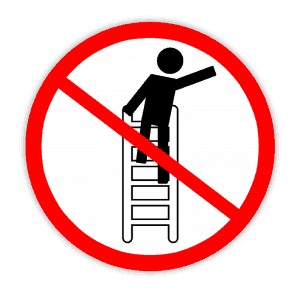Click here to get this post in PDF
 Whether you work in an office or a warehouse; a factory or shop, there are several risks that are common to any commercial premises. Knowing what these risks are – and how to mitigate against them is extremely important to safeguard the health and well-being of your employees and reduce business interruption through accidents or injuries.
Whether you work in an office or a warehouse; a factory or shop, there are several risks that are common to any commercial premises. Knowing what these risks are – and how to mitigate against them is extremely important to safeguard the health and well-being of your employees and reduce business interruption through accidents or injuries.
Risk assessment
A busy workplace will contain all kinds of risks, including badly positioned office furniture, ripped or damaged carpeting and dangerous spillages. The good news is that risks like these are fairly straightforward to work on, once they have all been identified. Redesign the office, factory or warehouse layout to allow people to walk around without impediment as they need to during the day. Provide manual handling training to teach people how to lift and manoeuvre heavy objects correctly and avoid slips and trips.
Warning system
Highlight any particularly dangerous areas clearly. Mark busy areas with floor markings and lines to designate pedestrian routes, storage areas and loading bays as appropriate. Using a professional line marking company such as Fastline Services will enable you to install durable, highly visible lines that will keep everyone safe. Install extra lighting in any dimly-lit areas and ensure the correct signage is used in areas where people need to take extra care when moving about or using particular machinery.
Tidy up
Establish a rota to keep things neat and tidy in the office or warehouse, and invest in decent storage solutions to eliminate piles of teetering boxes, files, pallets etc. Dispose of cardboard boxes and other packaging from deliveries immediately. Wipe up spillages as soon as they occur and get rid of any trailing wires. Repair any ripped carpet, loose tiles or broken hand rails and don‘t forget to take a look outside to make sure the entrance, car park and other external areas are all as free from risk as possible. Install guardrails and barriers where appropriate.
Hazardous working
Many businesses will require employees to work in more hazardous conditions, such as working at height, handling chemicals or operating machinery. Clearly, these operations will require a more in-depth risk assessment and will be subject to more stringent employment laws. It is vital to invest in the best quality harnesses, protective clothing, masks and health and safety equipment possible, and ensure that employees use them at all times. Provide full training for any machines or vehicles used in advance and make sure people know what to do in the case of a machine malfunction, chemical spillage or accident. Reduce the number of time people are required to work at height and increase productivity by establishing a system that sees the items or materials that are used more regularly stored lower down.
Emergency procedure
Finally, it is vital that everyone on your business site knows what to do in an emergency. Run regular drills and simulations of potential emergencies, such as fires, chemical leaks, shutdowns and bomb scares. Fires can quickly engulf an entire building, while chemicals spillages can seriously affect people with compromised health conditions and cause burns if they come into contact with human skin. Ensure you have clearly marked emergency exits and keep these clear and accessible at all times. Test machinery and equipment regularly, especially anything that comes into contact with flammable substances.
You may also like: How Improving Health and Safety Practices Help Small Businesses

[…] You may also like: Five Steps to a Safer Workplace […]